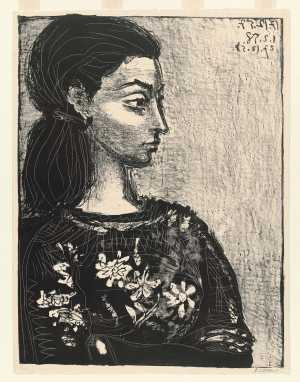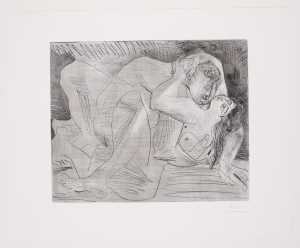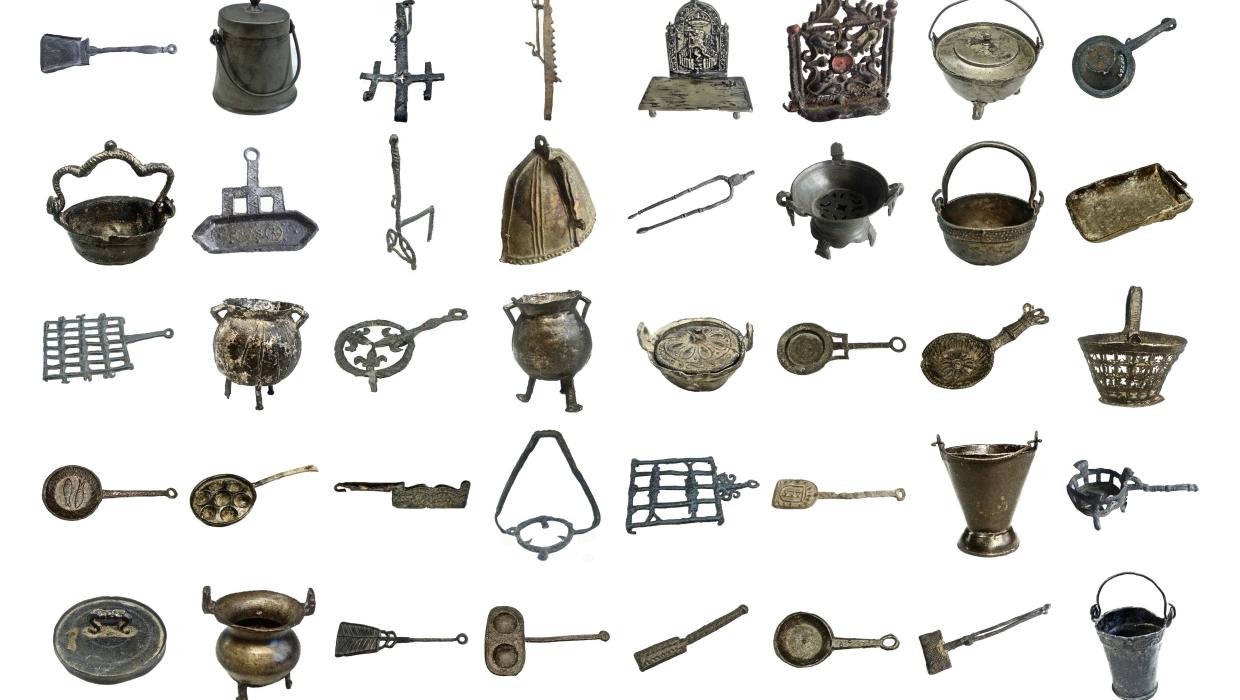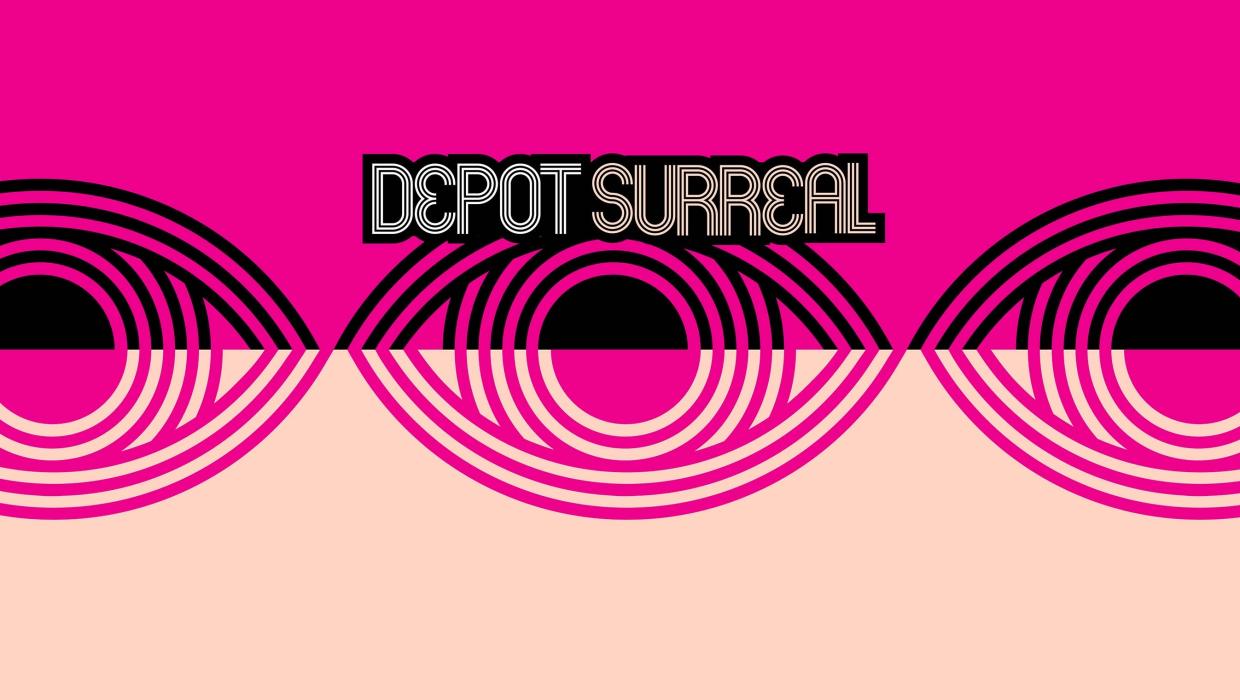
Picasso on paper
The exhibition ‘Picasso on Paper’ is the first of eleven exhibitions that are part of ‘Boijmans Next Door’, a unique partnership with other museums in Rotterdam that will keep part of Boijmans’ collection visible in the city over the next few years.
Picasso on paper
For Pablo Picasso (1881-1973), printmaking was an art form that allowed him to experiment to his heart’s content. Picasso made more than 2500 prints, using the most diverse techniques. Museum Boijmans Van Beuningen’s collection contains almost four hundred prints by Picasso, more than seventy of which are now on display in the Kunsthal. Among the highlights of the exhibition ‘Picasso on Paper’ are his coloured linocuts of subjects including still lifes, bullfights, mythological scenes and women. Picasso learned the coloured linocut technique in 1958, when he was already in his late seventies.
‘That Picasso was a genius is clear from his prints, a medium in which he constantly rediscovered himself as an artist. In the Kunsthal, Boijmans is showing the most beautiful examples from the museum’s extensive collection of his prints, with an emphasis on the spectacular coloured linocuts that he made between 1958 and 1963’, says Peter van der Coelen, the museum’s curator of prints and drawings.
Pablo Picasso
Pablo Picasso was born in Málaga in the south of Spain in 1881. His father was a painter, an art teacher and curator at a local museum. Picasso exhibited a great talent for drawing at an early age, and his father taught him figure drawing and oil painting from the age of seven. In 1895, following the death of Picasso’s sister from diphtheria, the family moved to Barcelona. There Picasso was admitted to the Escuela de Bellas Artes at the age of thirteen after his father convinced the school to allow him to sit the entrance exam. Later he was sent to the Real Academia de Bellas Artes de San Fernando in Madrid, the leading art school in Spain. At the age of sixteen, he turned his back on formal education and determined his own artistic path.
As the co-inventor of Cubism, Picasso was one of the most influential artists of the twentieth century. He worked in a great diversity of styles in a broad range of media including painting, sculpture, printmaking, ceramics and poetry. Throughout his long career, Picasso continued to reinvent himself, taking inspiration from his direct environment and a succession of female muses.




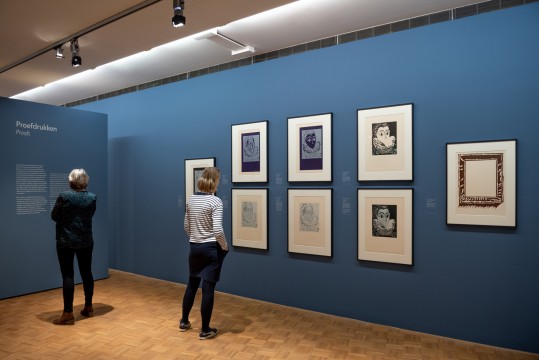
Women as model and muse
Women played an important role in Picasso’s life and work. Indeed, Picasso’s creativity was so stimulated by his spouses and lovers that his extensive oeuvre is sometimes divided into the periods of his life that he shared with a particular woman. In an etching from 1905, one of his earliest prints, we encounter Madeleine, a model with whom he had a brief relationship. The young Marie-Thérèse Walter (1909-1977), his mistress from 1927 to 1940, was his principal muse for the ‘Vollard Suite’ from 1930-37. This portfolio of a hundred etchings is a high point in Picasso’s graphic oeuvre. In the ‘Vollard Suite’, the woman features as a sculptor’s model in a variety of situations. She is also spied upon and seduced by the Minotaur – half man, half bull – in compositions with Surrealist elements. Eroticism and voyeurism remained important themes in the artist’s later prints. Jacqueline Roque (1927-1986) was Picasso’s second wife and his last life partner. He made more portraits of her than of any of his other lovers.
Boijmans Next Door
Museum Boijmans Van Beuningen’s international collection is being dispersed across Rotterdam. Some 500 masterpieces will be displayed in eleven special exhibitions at eight of the museum’s neighbours under the title ‘Boijmans Next Door’. The exhibitions in these guest venues will create encounters between Boijmans’ collection and that of its neighbours. For example, the Maritime Museum will exhibit a selection of seascapes, while masterpieces by Kandinsky and others will be displayed in the Chabot Museum, opposite Museum Boijmans Van Beuningen. In this way, you need not miss the museum’s collection while the building is being renovated. 'Boijmans Next Door' is made possible by stichting droom en daad.
More about Boijmans Next DoorTransit Boijmans Van Beuningen
Later this year, the museum will close for essential renovations. In this transitional period, the museum is making its world-class collection available elsewhere in Rotterdam and further afield. In addition to the ‘Boijmans Next Door’ projects, the museum has also created travelling exhibitions for museums all around the world. And schoolchildren in Rotterdam are being introduced to real artworks from the collection in the project ‘Boijmans in the Classroom’. Meanwhile, the construction of Depot Boijmans Van Beuningen continues apace. The world’s first publicly accessible art-storage facility will open at the beginning of 2021 and will safely house and display 154,000 artworks.
More about Boijmans in Transit
Exhibition on location
This exhibition can be seen at Kunsthal Rotterdam. Museumpark, Westzeedijk 341, 3015 AA Rotterdam. For information about opening hours, admission prizes, etc.
Here







